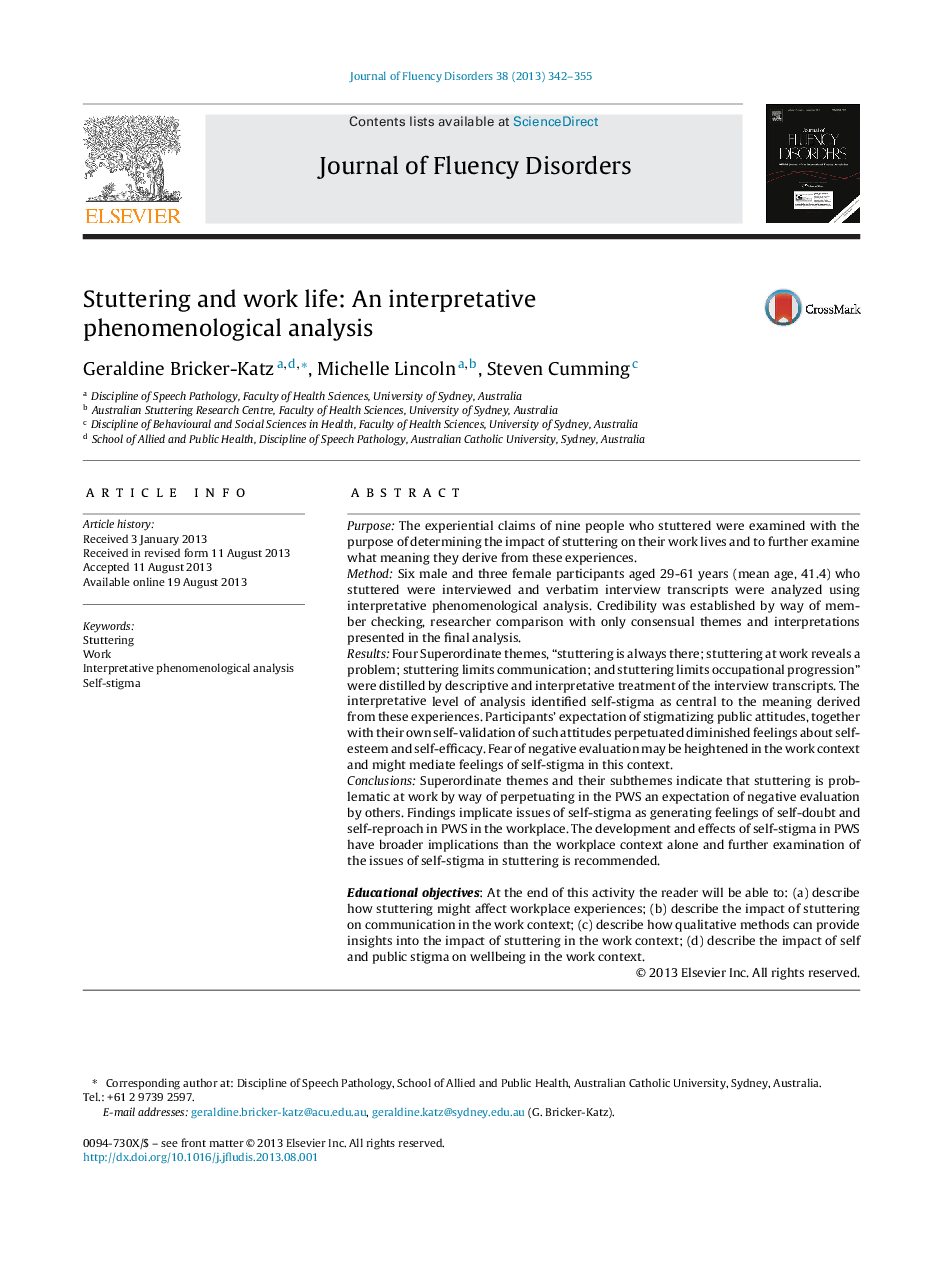| کد مقاله | کد نشریه | سال انتشار | مقاله انگلیسی | نسخه تمام متن |
|---|---|---|---|---|
| 911406 | 917921 | 2013 | 14 صفحه PDF | دانلود رایگان |

• Authors review what is known about the impact of stuttering on work and employment.
• This is the first qualitative study using the IPA method to focus on the workplace experiences of people who stutter.
• Research questions examine what it's like to be a PWS at work.
• Self-stigma is highlighted as a driving issue that can frame work life and create barriers to goal attainment and occupational progression.
PurposeThe experiential claims of nine people who stuttered were examined with the purpose of determining the impact of stuttering on their work lives and to further examine what meaning they derive from these experiences.MethodSix male and three female participants aged 29-61 years (mean age, 41.4) who stuttered were interviewed and verbatim interview transcripts were analyzed using interpretative phenomenological analysis. Credibility was established by way of member checking, researcher comparison with only consensual themes and interpretations presented in the final analysis.ResultsFour Superordinate themes, “stuttering is always there; stuttering at work reveals a problem; stuttering limits communication; and stuttering limits occupational progression” were distilled by descriptive and interpretative treatment of the interview transcripts. The interpretative level of analysis identified self-stigma as central to the meaning derived from these experiences. Participants’ expectation of stigmatizing public attitudes, together with their own self-validation of such attitudes perpetuated diminished feelings about self-esteem and self-efficacy. Fear of negative evaluation may be heightened in the work context and might mediate feelings of self-stigma in this context.ConclusionsSuperordinate themes and their subthemes indicate that stuttering is problematic at work by way of perpetuating in the PWS an expectation of negative evaluation by others. Findings implicate issues of self-stigma as generating feelings of self-doubt and self-reproach in PWS in the workplace. The development and effects of self-stigma in PWS have broader implications than the workplace context alone and further examination of the issues of self-stigma in stuttering is recommended.Educational objectives: At the end of this activity the reader will be able to: (a) describe how stuttering might affect workplace experiences; (b) describe the impact of stuttering on communication in the work context; (c) describe how qualitative methods can provide insights into the impact of stuttering in the work context; (d) describe the impact of self and public stigma on wellbeing in the work context.
Journal: Journal of Fluency Disorders - Volume 38, Issue 4, December 2013, Pages 342–355